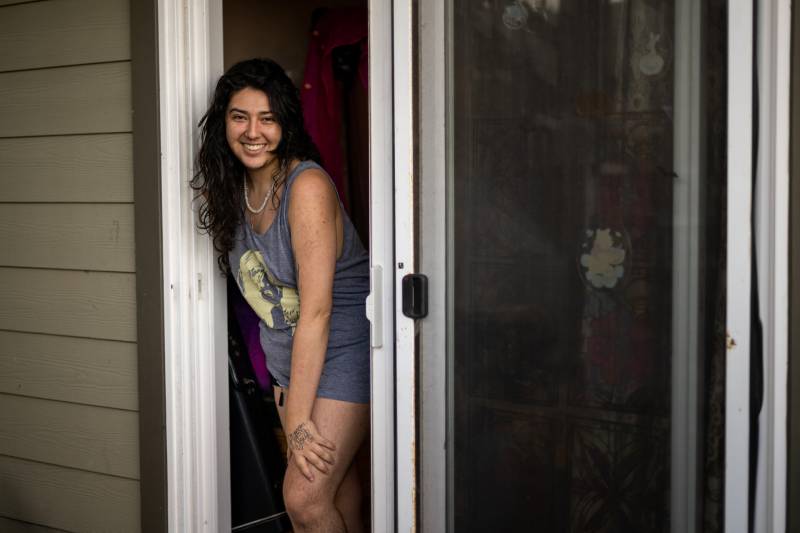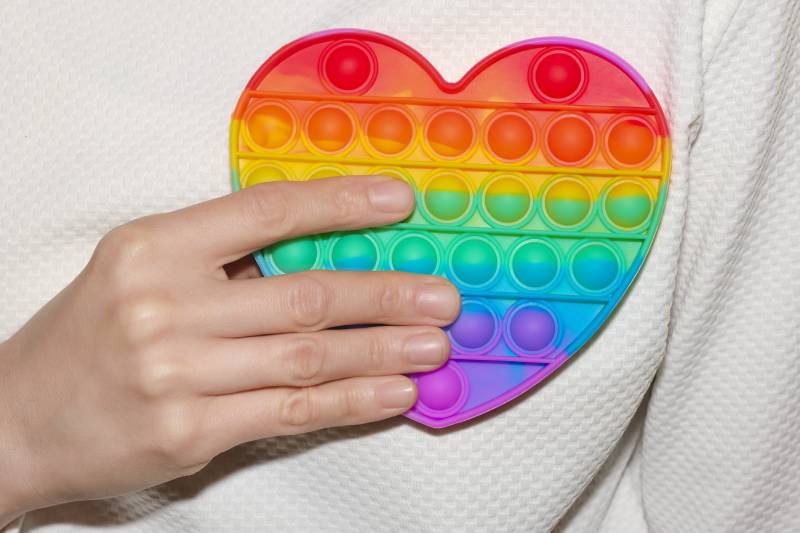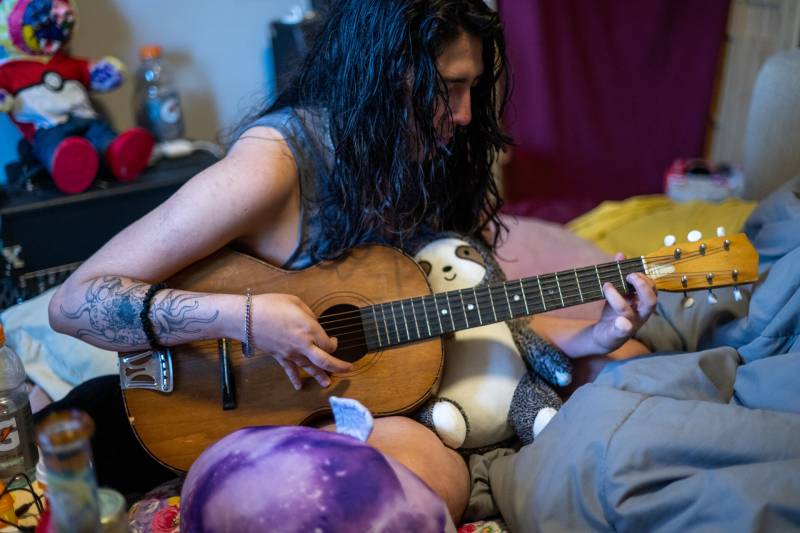As a toddler, Izzy Dier hated sundresses and loved Hot Wheels sneakers.
“I had a hunch, always, that I was way more masculine than my other female peers,” said Dier, who uses she/they pronouns.
As early as preschool, Dier started questioning her gender. When she was a teenager she began wondering if her testosterone was higher than average.
“I always had bushy facial hair and these little spots on my chin,” she said.

The 23-year-old now identifies as gender-fluid. She clutches her rainbow-colored purse as she leans back on a bench in Buena Vista Park. This spot under towering oak trees is Dier’s favorite place in San Francisco. Normally when she’s walking around or driving, she wears headphones.
“Otherwise my anxiety spikes and I just can't help but gasp at every little thing,” said Dier. “And just like jitter and jolt.”
When Dier was 3 years old, she was diagnosed with autism. Her preschool teachers noted that she was impulsive and hyperactive.
People who are transgender or nonbinary are more likely to be autistic. One large study found that it’s three to six times more common than in the general population. Researchers are working to understand the connection and exploring how society can be more accommodating to people who live at this intersection.
“We see that there is a pretty significant overlap in both directions,” said Dr. Aron Janssen, a psychiatrist at Northwestern University's Feinberg School of Medicine. In other words, it’s also more common for people who are autistic to question the sex they were assigned at birth.


